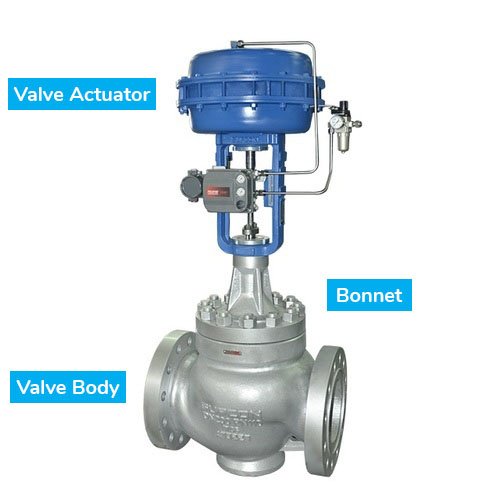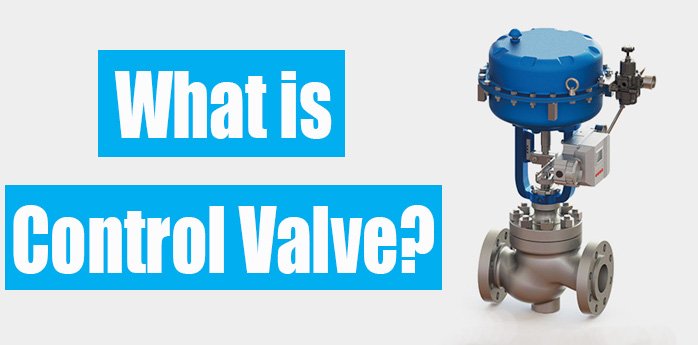Table of Contents
What is Control Valve?
Definition
A Control Valve is a device capable of modulating parameters such as flow, pressure, temperature, and level in response to the signal giving by an external control device. This external control device may be a PID Controller, PLC, etc.
The Control Valve is often referred to as a final control element. The control valve is a critical part of any control loop.

Principles of Operation
A control valve mainly contains two main parts: Valve Body and Valve Actuator.
Control Valve Body
There are different types and styles of a body of control valve depending on the application, environment, and types of material to control.
There are mainly two types of control valves are used such as Linear Motion or Rotary Motion.

You can find out about the different types of control valve bodies in the below image.

Control Valve Actuator
A control valve can be operated electrically, pneumatically, or hydraulically.
A control valve receives a signal from the external controller such as the PID Controller, PLC, etc. in order to change the position.
This external controller compares the set value given by the user with the feedback coming from the field and gives a signal to open or close the control valve.
These are some essential characteristics that a good actuator must-have.
⇒ An ability to follow the signal from the external controller accurately and without any delay.
⇒ A high degree of reliability. An actuator must be a rugged design and maintenance-free.
⇒ An actuator must be performed consistently and unaffected by the load.
Control Valve Parts

Body
The body is the main part of the valve. All other parts fit into the body. Inlet and outlet pipes fit into the body. The fluid passes through the valve body.
Bonnet
The bonnet is the top of the valve body which supports the moving parts of the valve.
Trim
Trim is another part that is directly coming with the fluid flowing from the valve. It consists of an opening/closing element, a valve stem, and a valve seat.
The valve stem connects the actuator with the closing element. The valve seat makes a seal with a closing element when the valve is closed.
Actuator
An actuator, as we have seen, maybe pneumatic, hydraulic, or electric type. The actuator receives a signal from the external controller in order to operate the valve.
Control Valve Working
As we have seen above that the actuator of the control valve can be operated electrically, pneumatically, or hydraulically. But the most commonly used actuator is the “Pneumatic Actuator”.

The control valve receives a signal from a controller such as PLC, DCS, PID Controller in order to close or open. These external controller compares the set value given by the user with the process value coming from the field and gives command accordingly.
The control valve used to control the flow is called the flow control valve, the same as the control valve used to control the pressure is called the pressure control valve. The control valve used to control the air is called the air control valve.
A control valve is used to control flow, pressure, air, level, temperature, oil pressure, etc.
Summary
I hope you like this article. Let’s quickly summarize the important points.
⇒ A control valve is important to control the parameters like flow, pressure, temperature, and level.
⇒ The control valve mainly consists of two parts: valve body and valve actuator. The valve body may be of different types and styles, most common are either linear motion or rotary motion. A valve actuator is used to operate the valve and may be pneumatic, electrical, or hydraulic.
⇒ Control valves are controlled by the signal coming from the external controller like PLC, DCS, PID Controller, etc.
If you like this blog, please share it with your friends and colleagues and give your feedback in the comment section below.
You can read more articles about Instrumentations and find books that boost your knowledge in the field of instrumentation ⇒
Thanks for reading!
